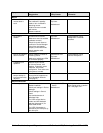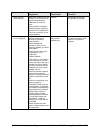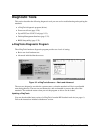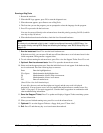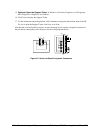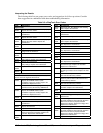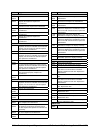
3-20 Troubleshooting and Diagnostics HP Omnibook XE3 (Technology Codes GE and GD)
Symptom Call Center:
Suggestions
Repair Center:
Likely Causes
Repair Center:
Comments
Notebook gets
abnormally hot.
Always set notebook on a flat
surface, so air can flow freely
around and underneath.
Make sure air vents are
clear.
Check heatsink installation.
Games and other programs
that drive CPU usage toward
100% can contribute, as can
charging battery.
Heatsink. Check heatsink for proper
fan operation or damage.
Notebook pauses
or runs sluggishly.
May be normal Windows
behavior (background
processing can affect
response time).
Certain background
operations (such as virus
scanning software) can affect
performance.
Press Ctrl+Alt+Del to see if
an application is not
responding.
Restart notebook.
If hard disk has spun down to
conserve power, it can take
several seconds to spin up. If
needed, use Power Options
in Control Panels to change
hard disk time-out to match
standby time-out.
Some file browsers respond
slowly while processing
graphics or waiting for broken
network connections to time
out.
Check for overheating—see
previous symptom.
If notebook’s hard disk drive
runs frequently (as indicated
by notebook’s hard disk drive
access light) while notebook
appears to be paused or
running slowly, consider
installing additional SDRAM.
For best performance with
Windows XP, notebook
should have a least 128 MB
of SDRAM.
Check available free disk
space. Delete temporary and
unneeded files.
Heatsink.
CPU module.
Motherboard.
If notebook slows after period
of continuous activity, check
heatsink—see previous
symptom.





